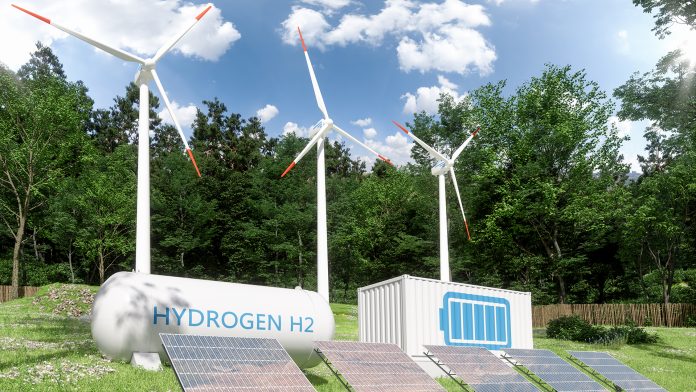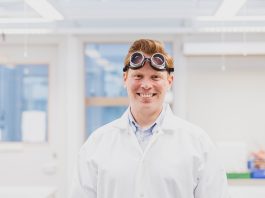Metal oxides are promising photoelectrodes for the production of green hydrogen with sunlight. However, progress until now has been limited.
Going forward, large quantities of hydrogen will be essential as an energy carrier and as raw material in the energy system of the future.
In order to achieve this, hydrogen must be produced in a climate-neutral way. One method of achieving this is by using sunlight to split water into hydrogen and oxygen. For this to be possible, semiconducting materials are needed to convert sunlight into electricity and remain stable in water. Metal oxides are some of the best options for stable and inexpensive photoelectrodes. Some of these metal oxides also have catalytically active surfaces that accelerate the formation of hydrogen at the cathode or oxygen at the anode.
So far, research has mainly focused on haematite, known commonly as rust. It is stable in water, cheap, and works as a photoanode with a demonstrated catalytic activity for oxygen evolution. Although the research on haematite photoanodes spans decades, the photocurrent conversion efficiency is less than 50% of the theoretical maximum value.
In comparison, the photocurrent efficiency of the semiconductor material silicon, which now dominates almost 90% of the photovoltaic market, is about 90% of the theoretical maximum value.
A research team led by Dr Daniel Grave, of Ben Gurion University, Dr Dennis Friedrich, of Helmholtz-Zentrum Berlin (HZB), and Professor Dr Avner Rothschild, of Technion, has been investigating why haematite falls so far short of the calculated maximum value.
The Technion researchers explored how the wavelength of absorbed light in hematite thin films affects the photoelectrochemical properties, while the HZB researchers established the wavelength dependent charge carrier properties in thin films of rust with time-resolved microwave measurements.
By combining their findings, which have been published in Nature Materials, the group were able to extract a fundamental physical property of the material that had often been neglected when considering inorganic solar absorbers: the photogeneration yield spectrum.
“Roughly speaking, this means that only part of the energy of the light absorbed by haematite generates mobile charge carriers, the rest generates rather localised excited states and is thus lost,” Grave explained.
“This new approach provides experimental insight into light-matter interaction in haematite and allows distinguishing its optical absorption spectrum into productive absorption and non-productive absorption,” Rothschild commented.
“We could show that the effective upper limit for the conversion efficiency of haematite photoanodes is significantly lower than that expected based on above band-gap absorption,” added Grave.
According to the new calculation, the optimal haematite photoanodes have come close to the theoretically feasible maximum.
The researchers’ approach has been applied to TiO2, a model material, and BiVO4, which currently stands as the best-performing metal oxide photoanode material.
“With this new approach, we have added a powerful tool to our arsenal that enables us to identify the realisable potential of photoelectrode materials. Implementing this to novel materials will hopefully expedite the discovery and development of the ideal photoelectrode for solar water splitting. It would also allow us to ‘fail quickly’, which is arguably just as important when developing new absorber materials.” concluded Friedrich.









